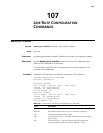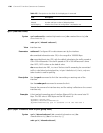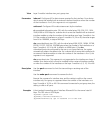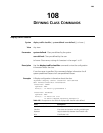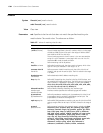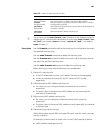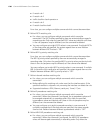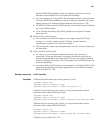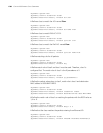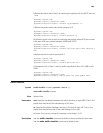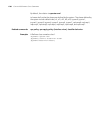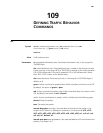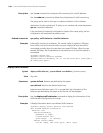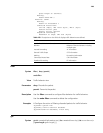1786 CHAPTER 108: DEFINING CLASS COMMANDS
■ if-match rule 1
■ if-match rule 2
■ traffic classifier classA operator or
■ if-match rule 3
■ if-match classifier classB
For a class, you can configure multiple commands which cannot be overwritten.
5 Define DSCP matching rule.
■ For a class, you can configure multiple commands which cannot be
overwritten. The DSCP values specified by them are automatically arranged in
ascending order. Only when the specified DSCP values are identical with those
in the rule (sequence may be different) can the command be deleted.
■ You may configure up to eight DSCP values in one command. If multiple DSCPs
of the same value are specified, the system regards them as one. Relation
between different DSCP values is "OR".
6 Define 802.1p priority matching rule.
For a class, you can configure multiple commands which cannot be overwritten.
The 802.1p priority values specified by them are automatically arranged in
ascending order. Only when the specified 802.1p priority values are identical with
those in the rule (sequence may be different) can the command be deleted.
You may configure up to eight 802.1p priority values in one command. If multiple
802.1p priorities of the same value are specified, the system regards them as one.
Relation between different 802.1p priority values is "OR".
7 Define inbound interface matching rule.
■ For a class, you can configure multiple commands which cannot be
overwritten.
■ Before defining this matching rule, make sure that the interface exists. If the
specified interface is a dynamic one, removing the interface can delete the rule.
■ Supported interfaces: ATM, Ethernet, serial port, Tunnel, VT, etc.
8 Define IP precedence matching rule
■ For a class, you can configure multiple commands which cannot be
overwritten. When the command is configured, the ip-precedence values will
be arranged automatically in ascending order. Only when the specified
ip-precedence values are identical with those in the rule (sequence may be
different) can the command be deleted.
■ You may configure up to eight ip-precedence values in one command. If
multiple ip precedence of the same value are specified, the system regards
them as one. Relation between different ip-precedence values is "OR".
9 Define MPLS EXP precedence matching rule.
■ For a class, you can configure multiple commands which cannot be
overwritten. When the command is configured, the MPLS EXP precedence
values will be arranged automatically in ascending order. Only when the




